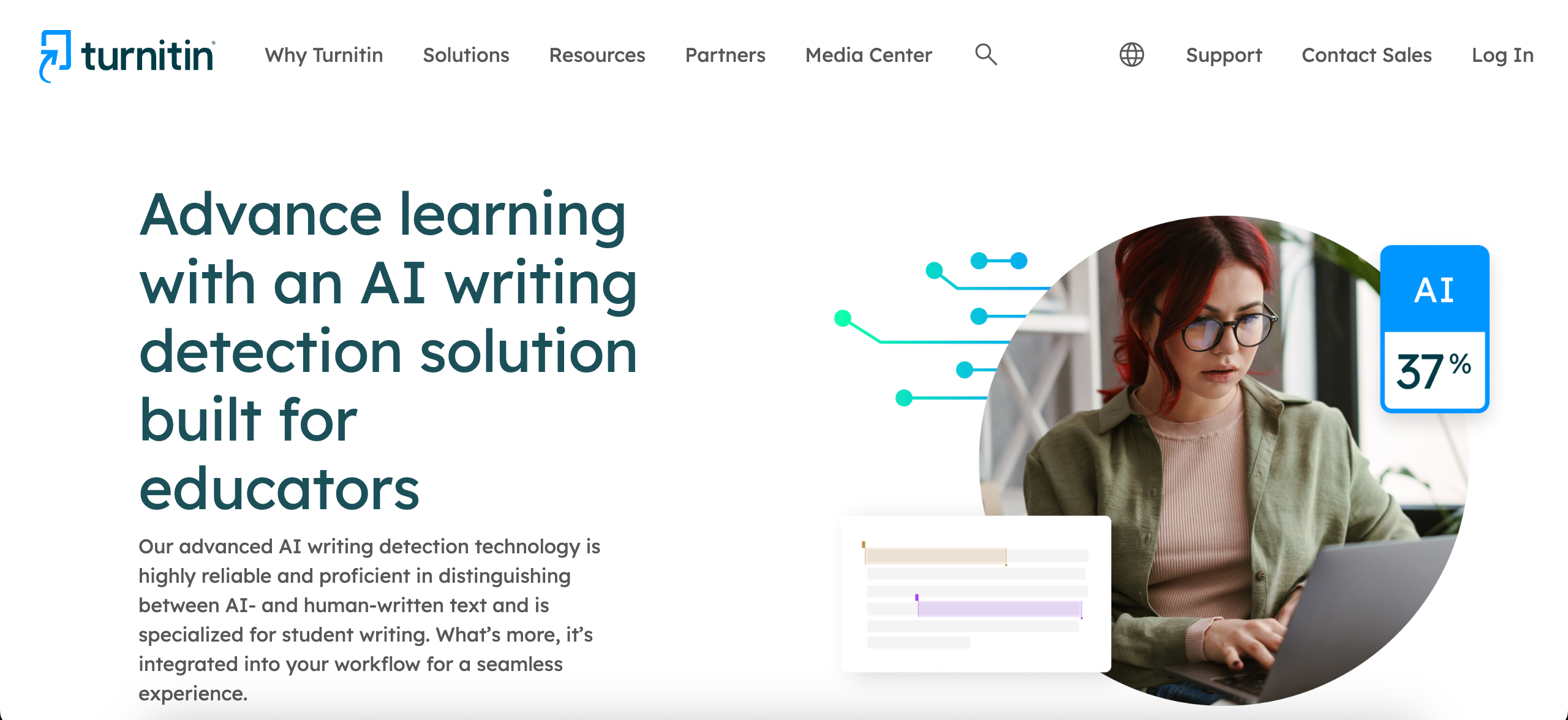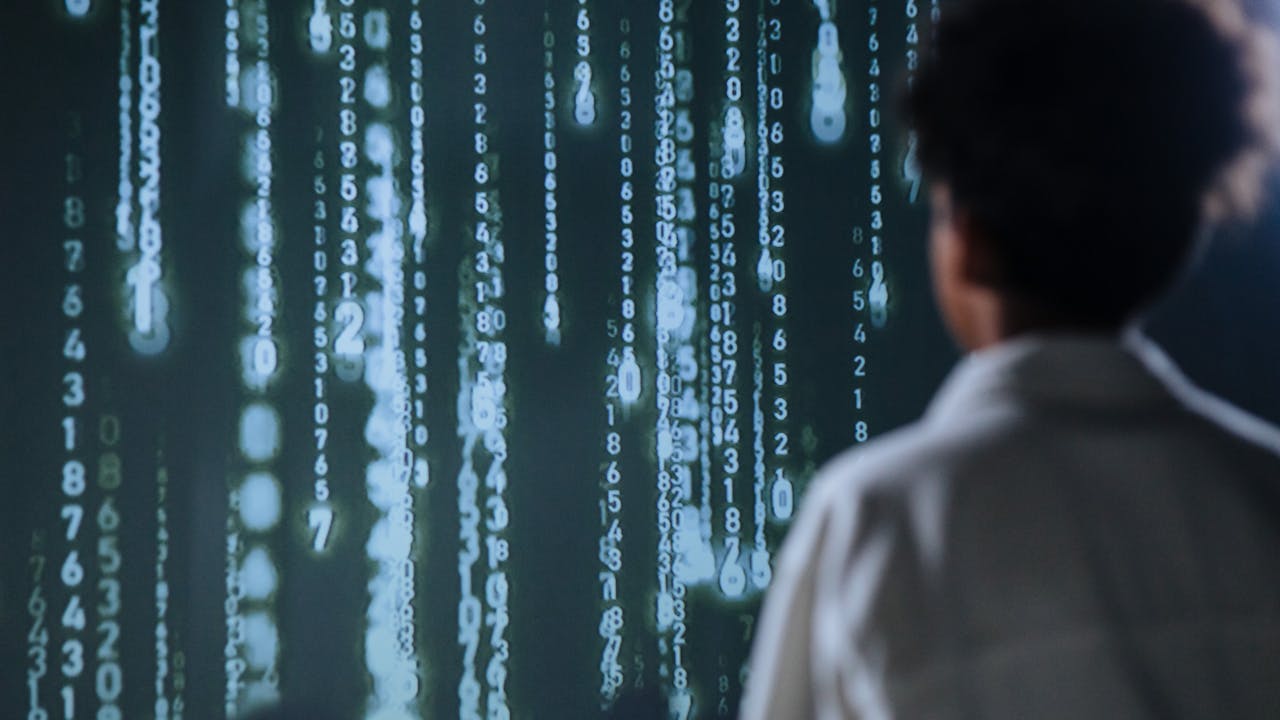AI Tools
Is Turnitin AI Detection Accurate in 2025? Reliability Explained
- Jul 31, 2025

As AI writing tools become more sophisticated and widespread, both students and educators face growing uncertainty about detection technology's effectiveness. Understanding Turnitin's actual performance, not just its marketing claims, is essential for making informed decisions about academic integrity policies. As a linguist, I'm naturally skeptical of any machine's claim to "understand" writing. These systems are pattern-matchers, not scholars. Their rise creates a new, quiet form of institutional oversight that we must examine critically. This analysis draws from independent studies and real-world testing data to provide a clear picture of what Turnitin can and cannot detect in 2025.
Turnitin AI Detection Accuracy Overview
| Metric | Turnitin's Claims | Independent Study Results | Real-World Performance |
|---|---|---|---|
| Overall Accuracy | 98% | 86% | 80-86% |
| Human Text Identification | 98%+ | 93% | 95-98% |
| AI-Generated Content | 85-98% | 77% | 77-85% |
| False Positive Rate | <1% | 2-5% | 2-7% |
| Disguised AI Detection | ~85% | 63% | 20-63% |
| Hybrid Content Detection | ~85% | 23-57% | <50% |
| Margin of Error | Not stated | ±15 percentage points | ±15 percentage points |
What Turnitin Claims About Its AI Detection Accuracy
Turnitin makes bold assertions about its AI detection capabilities. The company officially claims 98% accuracy in identifying AI-generated content. It reports a Turnitin AI detection false positive rate of less than 1% for text containing at least 20% AI writing.
However, there's an important admission from Turnitin's own product officer: they intentionally "find about 85% of" AI-generated content, deliberately letting "15% go by in order to reduce our false positives to less than 1 percent". This design choice reveals a strategic compromise, Turnitin prioritizes avoiding false accusations over catching all AI content.
The company acknowledges limitations and emphasizes its tool provides "data for educators to make informed decisions, rather than to make determinations of academic misconduct itself".
How Turnitin's AI Detection Actually Performs in Testing

Independent studies reveal a more complex picture of Turnitin's real-world performance. A detailed evaluation is available from Temple University’s teaching resources.
- 93% of fully human-written texts correctly identified
- 77% of fully AI-generated texts correctly identified
- 86% overall success rate for detecting any AI presence
- 6% of files couldn't be processed due to format issues
Additional academic benchmarking shows that when AI-generated text is manually disguised or heavily edited, Turnitin correctly flagged only 63% of disguised AI-generated texts as 100% AI, with approximately 37% either undetected, partially detected, or unratable.
| Content Type | Accuracy (Independent Study) | Turnitin's Claim |
|---|---|---|
| Human-written | 93% | 98% |
| Fully AI-generated | 77% | 85-98% |
| Disguised AI content | 63% | ~85% |
| Hybrid content | 23-57% | ~85% |
| Unprocessable files | 6% of submissions | Not addressed |
Performance Against Different AI Models
Testing reveals significant variation in detection effectiveness across different AI platforms:
High Detection Accuracy (98-100%)
- GPT-4 (OpenAI): Consistently detected with 98-100% accuracy
- Google Gemini: Similarly high detection rates of 98-100%
Variable Detection Performance
- Claude (Anthropic): Detection rates are "more volatile and less consistent"
- Claude 3.5 Haiku showed only 53-60% of outputs scoring above the 90% AI-likelihood threshold
- Mean detection scores ranged from 59-68% depending on the Claude version
The Paraphrasing and Editing Challenge
Turnitin's accuracy drops significantly when AI content is modified:
AI Paraphrasing Tools (QuillBot)
- Tests show Turnitin detects 64% or more of QuillBot-paraphrased content as AI-generated.
- However, other studies found only 20% detection of AI-paraphrased texts, suggesting up to 80% could go undetected in specific scenarios.
- Light or simple rewrites are usually detected, but sophisticated rewriting can evade detection at higher rates.
Human Editing of AI Content
- Extensive human editing of AI drafts can significantly reduce detection rates.
- Detection depends on editing depth, thorough human revision can often fool the system.
- Hybrid texts (part-human, part-AI) show the weakest detection accuracy.
The False Positive Problem and Why It Matters
While Turnitin claims a 1% false positive rate, real-world data tells a different story:
Documented False Positive Rates
- Independent studies report 2-5% false positive rates in practical use.
- Sentence-level false positive rates are around 4%.
- A Washington Post review reported up to 50% false positives in limited testing.
- Detection comes with a ±15 percentage point margin of error
Real-World Impact
At a university processing 75,000 papers annually, a 2-5% false positive rate means 1,500-3,750 students could be wrongly accused of using AI. Of course, for a large institution, a 'small' percentage of errors is an acceptable operational cost. For the student who is wrongly accused, it's a personal catastrophe. This asymmetry of risk is a classic feature of such systems. These aren't just statistics, they represent real people facing potential academic misconduct allegations.
Bias Concerns
Evidence shows Turnitin's detector flags neurodivergent students and non-native English speakers at elevated rates, despite Turnitin's claims of "no statistically significant bias".
University Responses: A Growing Trend of Caution
Following Vanderbilt University's decision to disable Turnitin's AI detector, other institutions have taken similar steps:
Institutional Decisions
- Vanderbilt University: Disabled the tool citing "potential harm to students" and "lack of transparency".
- Cambridge and Durham Universities: Reports indicate they've stopped using the feature or advised faculty against relying on AI detectors
- Multiple institutions: Have officially dropped AI detection software for academic integrity cases
Reasons for Discontinuation
- High false positive rates risking unfair accusations
- Lack of transparency in detection methodology
- Bias concerns particularly for non-native English speakers
- Privacy issues with third-party handling of student data
- Legal and ethical risks (see a comprehensive)
Turnitin's 2025 Updates and Improvements
Recognizing these limitations, Turnitin has implemented several updates:
Enhanced Detection Categories
- Interactive Detection Categories: AI writing reports now split scores into "AI-generated only" and "AI-generated text that was AI-paraphrased".
- Submission breakdown visuals for improved clarity.
Technical Improvements
- Enhanced AI paraphrasing detection to better identify paraphrased content
- Increased submission limits for more comprehensive analysis
- Ongoing monitoring and continuous model updates.
Where Turnitin Struggles Most
Current limitations include:
- Hybrid texts: Content combining human and AI writing shows 23-57% detection accuracy.
- Edited AI content: Substantial human editing dramatically reduces detection rates.
- AI paraphrasing tools: 20-80% of paraphrased content may go undetected depending on the tool.
- File compatibility: 6% of submissions go unanalyzed due to format problems.
- Real-world conditions: Accuracy drops from 98% in controlled settings to 80-86% in educational contexts.
What Educators Should Know About Using These Results
Faculty and policy experts recommend several best practices:
- Use professional judgment: Do not rely solely on AI detection scores.
- Compare to prior work: Look for inconsistencies in student writing patterns.
- Engage in conversation: Discuss suspicious results openly with students before taking action. A conversation, a very old-fashioned technology, is still the best tool for discovering the truth.
- Remember the tool's purpose: Turnitin states its tool is "a resource, not a decider".
Most importantly, avoid making disciplinary decisions based solely on an AI score. The collective data suggests that while detection works well for purely human or purely AI-generated texts, accuracy drops significantly in complex, hybrid, or diverse-authorship scenarios.
The Bottom Line on Turnitin's Reliability
In 2025, Turnitin's AI detection offers useful but imperfect guidance. The system is:
- Most reliable at clearing genuinely human-written work (93% accurate).
- Moderately effective at catching unmodified AI-generated content (77-98% depending on the model).
- Significantly less reliable with hybrid, edited, or paraphrased AI text (20-63% accuracy).
- Subject to false positives affecting 2-5% of students in real-world use.
The ±15 percentage point margin of error means interpretation requires caution. As noted by multiple universities and independent researchers, the technology should be seen as fallible and used with significant human oversight.
Frequently Asked Questions
1. Can Turnitin be wrong about AI?
Yes, Turnitin can be wrong. Independent testing shows false positives occur in 2-5% of human-written texts in practical use, and the system misses approximately 23-37% of modified AI-generated content. The error rate increases significantly with hybrid texts.
2. Does Turnitin check if it's AI?
Yes, Turnitin includes an AI Detection feature that analyzes submitted work for indicators of AI-generated writing. The system examines linguistic patterns and provides an AI probability score with a ±15 percentage point margin of error.
3. Can Turnitin detect AI under 300 words?
Turnitin requires a minimum of 300 words to generate an AI writing score. Submissions below this threshold will not receive analysis, creating a significant blind spot for shorter assignments.
4. How reliable is AI detection?
AI detection accuracy varies dramatically by content type. While Turnitin shows 98-100% accuracy for unmodified content from GPT-4 and Gemini, this drops to 20-63% for paraphrased or edited content. Real-world accuracy ranges from 80-86% compared to controlled testing.
5. Is the Turnitin AI detector free?
No, Turnitin's AI detector is not free. It is part of an institution's paid subscription package and is not available as a standalone tool.
6. How good is Turnitin's AI detection?
Turnitin's effectiveness depends heavily on content modification. It excels at detecting unaltered AI content but struggles with paraphrased, edited, or hybrid texts. The ±15 percentage point margin of error requires careful interpretation.
7. How do I use Turnitin AI detection as a student??
Students cannot typically access the AI detector directly, only educators have access to reports. However, understanding the system's limitations helps prevent unintentional issues, particularly around proper attribution and revision practices.
